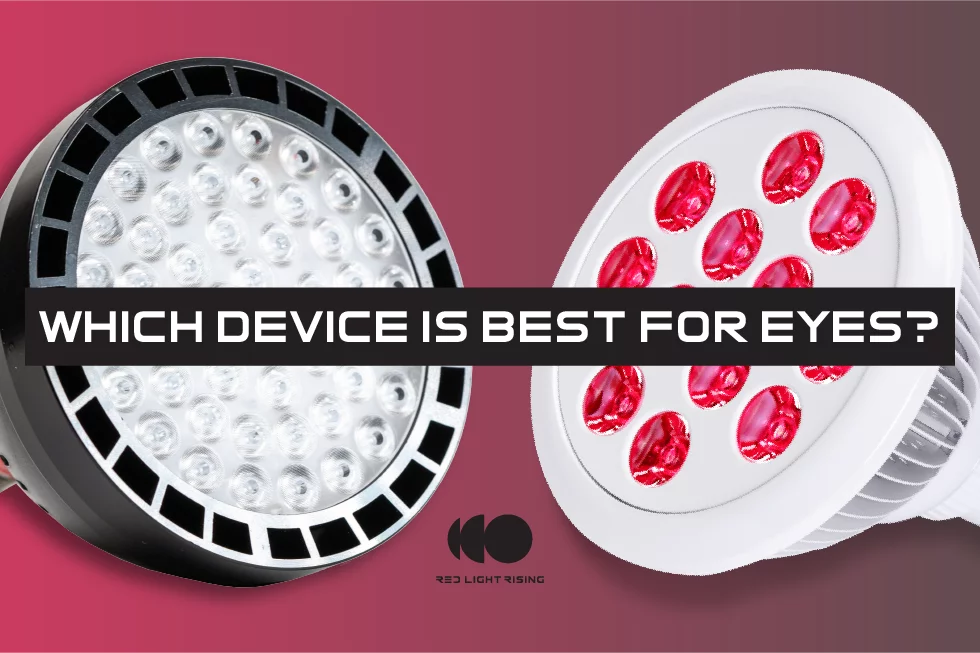Target Light 670 vs. Target Light 2.0
Red Light Therapy (RLT) devices are gaining popularity for their potential applications in various wellness routines. In this blog, we'll explore which RLT device might be more suited for those interested in eye-focused applications.
- Exploring Scientific Studies
- Our Devices
- Choosing the Right Device
- Conclusion
Exploring Scientific Studies:
There has been increasing interest in the potential of RLT for various applications, including eye health. While some studies have been conducted, it's important to note that the field is still evolving. For detailed information on these studies, you can refer to our previous blogs: "Red Light Therapy for Eye Health" and "Red Light Therapy for Eyes [UPDATED]."

Our Devices:
At Red Light Rising, we offer two devices that might be of interest to those focusing on eye wellness:
- Target Light 670: This device was designed with a specific focus on applications that might be beneficial for the eyes, as well as for skin care. It operates at a wavelength of 670nm.

- Target Light 2.0: This versatile device is suitable for those looking for a broader range of applications. It offers the flexibility of switching off the Near-Infrared (NIR) light and using only the red light at 660nm, which can be suitable for eye-related use.

Choosing the Right Device:
The choice between Target Light 670 and Target Light 2.0 depends on your specific needs and interests.
- If your primary interest lies specifically in eye health, the Target Light 670, designed for this purpose, could be a good choice.
- If you're looking for a more versatile device that can cater to a range of uses, including but not limited to eye wellness, the Target Light 2.0 offers that flexibility. Larger panels are also an option for those requiring broader coverage.
Conclusion:
Both the Target Light 670 and Target Light 2.0 offer features that might be suitable for those interested in exploring RLT, particularly in the context of eye wellness. Consider your specific needs and intended uses when making your choice.
For any further inquiries or detailed product information, feel free to reach out to us at info@redlightrising.co.uk.
Sources of information about RLT and eyes:
- Effects of low level laser treatment on the survival of axotomized retinal ganglion cells in adult Hamsters
- https://pubmed.ncbi.nlm.nih.gov/25558230/ A DOUBLE-MASKED, RANDOMIZED, SHAM-CONTROLLED, SINGLE-CENTER STUDY WITH PHOTOBIOMODULATION FOR THE TREATMENT OF DRY AGE-RELATED MACULAR DEGENERATION
- https://pubmed.ncbi.nlm.nih.gov/31404033/ Five-year follow-up of low-level laser therapy (LLLT) in patients with age-related macular degeneration (AMD)
- https://iopscience.iop.org/article/10.1088/1742-6596/992/1/012061/pdf Two year follow-up of low-level laser therapy (LLLT) in patients with age-related macular degeneration (AMD) https://onlinelibrary.wiley.com/doi/abs/10.1111/j.1755-3768.2012.S053.x
- Near infra-red light attenuates corneal endothelial cell dysfunction in situ and in vitro https://pubmed.ncbi.nlm.nih.gov/28619506/

